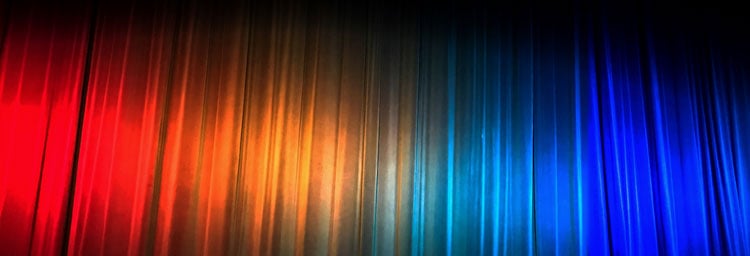When Matthew Grenier found out his high school was planning to convert its auditorium stage lighting to LED, he offered to consult on the design and implementation. It’s one of the venues where he got his start in theatrical design, so he cared very much about how effectively the venue could support the theatrical arts and other events that occurred inside.
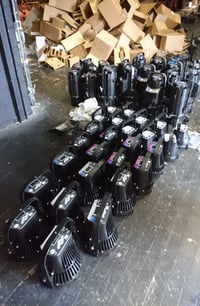 Once he got the new LED fixtures in place, he realized that some of the beams needed adjustment and that Rosco’s new OPTI-SCULPT beam shaping filters were the solution. He shares his story below.
Once he got the new LED fixtures in place, he realized that some of the beams needed adjustment and that Rosco’s new OPTI-SCULPT beam shaping filters were the solution. He shares his story below.
Like many LED conversion projects, the goal for Norwich High School Auditorium was to purchase as many fixtures as the budget would allow without sacrificing on quality. Fortunately, we were able to achieve an inventory of mostly ETC fixtures.
In designing the repertory rig, there was pressure to stretch the coverage of the fixtures we could afford to buy. I took as much care as possible to specify appropriate lenses; I relied on manufacturer data sheets and Vectorworks for visualization. Despite this care, there were some inadequacies in the coverage of the ETC D60 Lustr+ fixtures on the front of house position.
Video showcasing Matthew Grenier's design for Norwich High School Auditorium in Vectorworks
I specified five ETC Desire D60 Lustr+ LED fixtures with Narrow Oval lenses to provide a soft general wash. Unfortunately, the beam did not spread up the grand curtain enough, or reach far enough to the front edge of the stage.
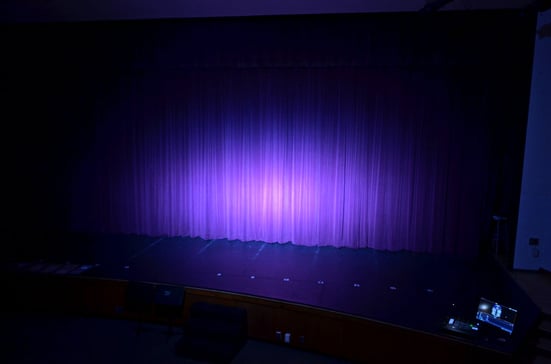 ETC D60 fixture with Narrow Oval Lens on the main drape.
ETC D60 fixture with Narrow Oval Lens on the main drape.
I also specified three D60 fixtures with Wide Oval lenses to light the pit in front of the stage. Choral risers are often placed in the pit during concerts, so it was important to have some dedicated coverage in that area. While the beam spread left/right was sufficient, I found the coverage up/down was lacking. Students standing at the top of the risers might be in the dark compared to at the bottom of the risers. Adding R113 to spread the light vertically helped somewhat, but the same issues persisted.
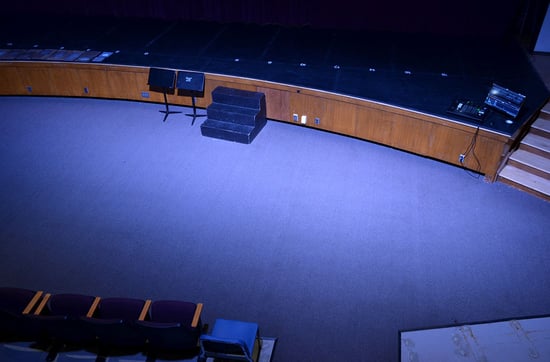 ETC D60 fixture with Wide Oval Lenses + R113 in the pit.
ETC D60 fixture with Wide Oval Lenses + R113 in the pit.
While considering solutions to my D60 coverage issues, I found myself browsing through all of the diffusion materials available on Rosco’s website. That’s when I stumbled across their new OPTI-SCULPT Filters, which are specifically meant for precise beam shaping. I figured they were worth trying before fiddling with more diffusion gels or exchanging the ETC lenses. I ordered a complete set of filters to try.
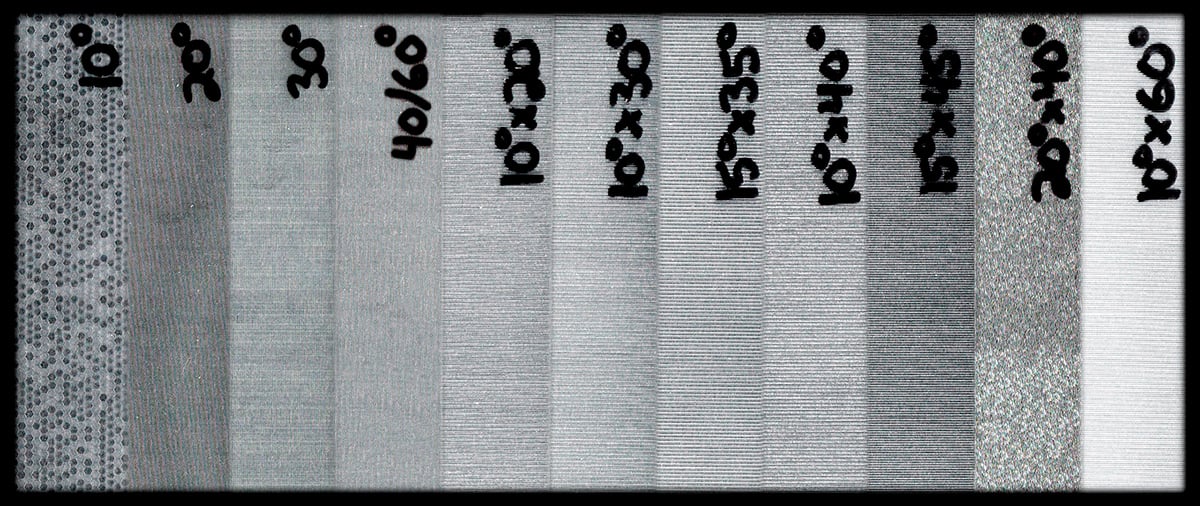
A few observations:
- At 10mil, the filter material is much thicker than a typical gel, but I could still easily cut it with scissors. It is not thick enough to go without a gel frame though.
- Many of the filters are physically similar to one another so I had to be very careful labeling my cuts. The 10° filter is the most unique.
- Every filter has a smooth side and a textured side and the smooth side faces toward the light source. The exception is the reversible 40/60 filter; smooth side in gives you 40°, textured side in gives you 60°.
- All of the filters have some kind of striated pattern to them, so they all produce oblong light to some degree. In the “round” beam shapes (10°, 20°, 30°, 40°/60°) the asymmetry is very subtle. I say this based on testing with a sharply focused Source Four LED on a white cyclorama.
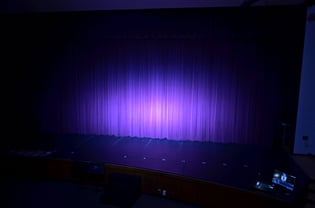

(1) ETC D60 fixture with Narrow Oval Lens, (2) D60 with OPTI-SCULPT 20° Filter.
After testing the various beam shapes, I decided the OPTI-SCULPT 20° filter was best for resolving the issue with the general wash. The 20° filter spread the light further up the grand curtain and further down toward the front of the stage. The width of the beam was still perfectly suitable for five areas across the stage. For a general wash, I was not particularly concerned by the little bit of light spill onto the very front of the stage. Depending on your application, you might desire further beam control accessories like top hats or barn doors.
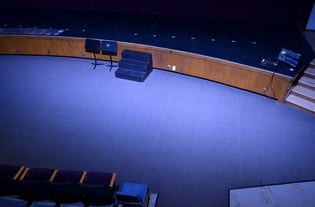
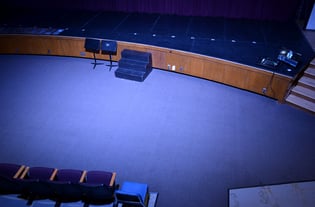
(1) ETC D60 fixtures with Wide Oval Lens +R113, (2) D60's with the OPTI-SCULPT 40°/60° Filter.
For the pit lighting, I decided that the OPTI-SCULPT 40°/60° filter was the best option. This particular filter is unique in that, when installed in one direction it results in a 40° spread – flip it around and you’ve got a 60° spread. The 60° orientation stretched the light further up onto the apron of the stage and further down toward the front row of the audience. This was exactly what I was looking for; the maximum possible coverage and the maximum brightness I could get.
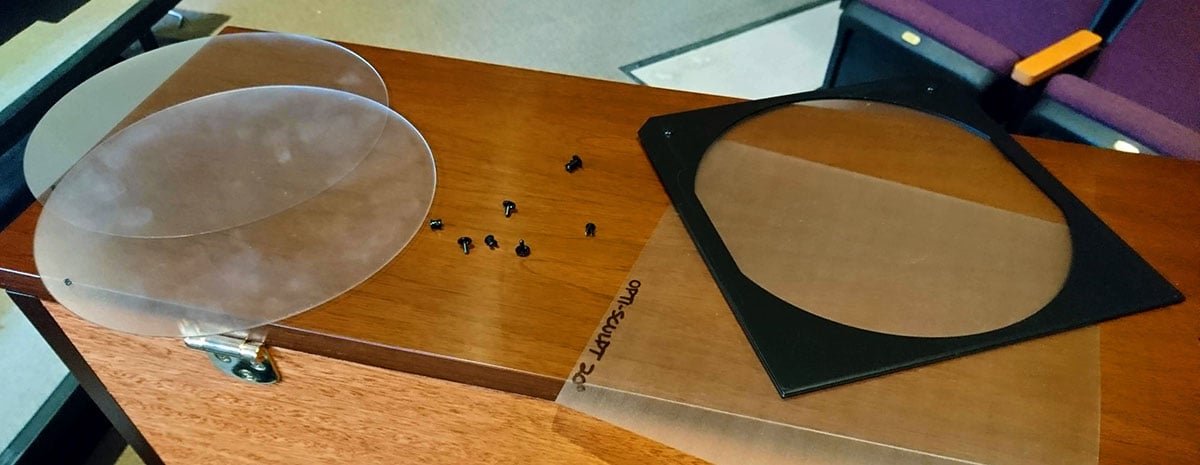
One final word of warning… many LED fixtures do not ship with color frames. As a result, I had to cannibalize my ETC lenses in order to frame up the OPTI-SCULPT filters for the D60’s. Make sure you buy color frames if you ever think you’ll want to modify the beam!
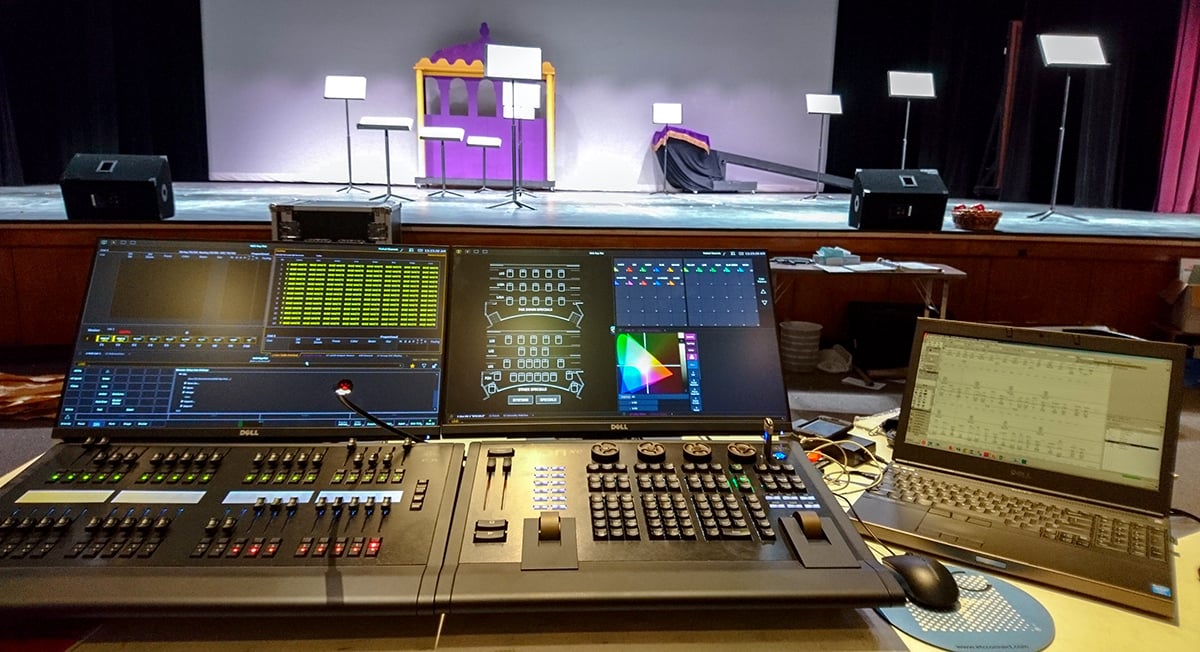
Overall, I definitely found OPTI-SCULPT filters to be worth keeping in my lighting design toolbox for future projects. I like the variety of beam shapes they come in. I like that the material is more robust than a typical gel. I like that they can be used in both LED and traditional incandescent lights. Lastly, I like that they helped me wrap-up a project that will keep events in my high school’s auditorium looking great for years to come.
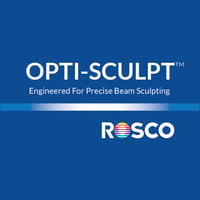 Many thanks to Matthew Grenier for sharing his experience using our new OPTI-SCULPT filters. If you’d like to see more of Matthew’s design work, visit his website: mattgrenier.com. If you’d like to learn more about the filters he used in the LED upgrade inside Norwich High School Auditorium, visit the OPTI-SCULPT Filters product page on our website or contact your local Rosco Dealer to request an OPTI-SCULPT swatch book.
Many thanks to Matthew Grenier for sharing his experience using our new OPTI-SCULPT filters. If you’d like to see more of Matthew’s design work, visit his website: mattgrenier.com. If you’d like to learn more about the filters he used in the LED upgrade inside Norwich High School Auditorium, visit the OPTI-SCULPT Filters product page on our website or contact your local Rosco Dealer to request an OPTI-SCULPT swatch book.

